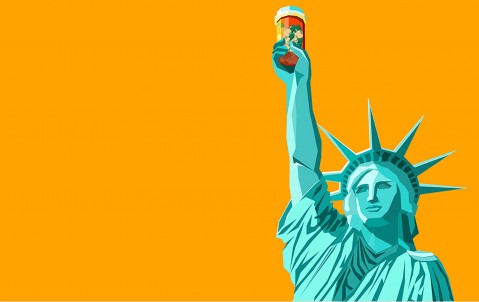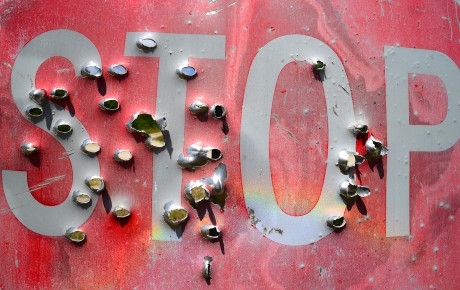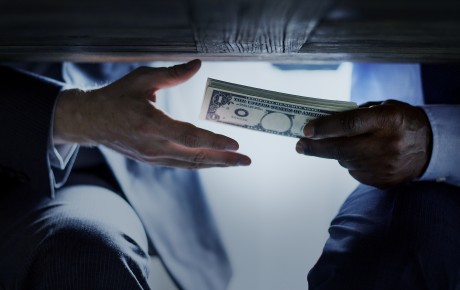
American overdose
The “worst drug crisis in American history” could have a profound effect on liability insurers.
The opioids crisis gripping the US is, according to the White House, the “worst drug crisis in American history” and “a public health emergency”. More than 2 million people are addicted, 46 Americans on average die each day from prescription opioid overdoses and the problem is costing the US economy $504 billion every year, or 3% of the country’s Gross Domestic Product.
It could also become the defining corporate crisis of the early 21st century, says Ed Whitworth, Management Liability Underwriter at Hiscox London Market. “It has the potential to have as large an impact as the financial crisis of 2008,” on American society.
The human and social crisis also has the potential to be a catastrophe for the liability insurance sector, Whitworth adds. “It could be a systemic loss for the market, because multiple lines of liability insurance are likely to see claims,”
Poppy flower power
Opioids are powerful painkillers related to the opium poppy plant, from which heroin is made. Some of the drugs are made directly from the plant, while others are made in a laboratory using the same chemical structure as the poppy, known as synthetic opioids. Originally given to cancer victims or patients recovering from surgery to relieve short-term acute pain, from the 1990s they were increasingly prescribed to those suffering from chronic pain. As a result, their use skyrocketed.
But opioids come with a bad side effect: they are highly addictive. As the number of prescriptions increased, so too has the number of resultant overdoses and deaths. From 1999 to 2017, almost 218,000 people died in the US from overdoses related to prescription opioids.
The number of opioid prescriptions issued peaked in 2012 at more than 255 million, equivalent to 81.3 prescriptions per 100 people.
The number of opioid prescriptions issued peaked in 2012 at more than 255 million, equivalent to 81.3 prescriptions per 100 people in the US, according to data from the Center for Disease Control and Prevention (CDC). Although the number has gradually begun to fall since then, 191 million opioid prescriptions were still issued in 2017.
The Trump administration is proposing to cut the number of opioid prescriptions by one third within three years, and reduce production of the main drugs to try to tackle the problem. The number of opioids being prescribed has already fallen by nearly 20% between 2006 and 2017, and particularly since 2012, suggesting that doctors have become more cautious in issuing the drugs, as more evidence of their potential harmful properties has emerged. However, prescription rates differ widely across the country. In some counties, particularly in southern states like Alabama and Tennessee, more prescription opioids were dispensed than there were inhabitants.
A rush of insurance claims
The crisis is likely to spark a wave of insurance claims akin to that which followed in the wake of the 2008 financial crisis, says Whitworth. In their own ways, both scandals have put a drag on the country’s economy and are likely to generate social and political fallout for years. Like the financial crash, many businesses from different industries will be blamed for contributing to the opioid problem, generating claims for a multitude of liability insurance lines.
But, whereas the US economy has largely recovered from the financial crisis in 2008, with the stock and housing markets having bounced back and unemployment low, the opioid crisis shows no sign of abating, over 20 years after it started. Overdose deaths involving prescription opioids were five times higher in 2017 than in 1999. The dose of opioids prescribed per person is around three times higher than it was in 1999, according to the CDC. In 2017, each patient was still given an average of more than three opioid prescriptions, while the average length of prescription continues to increase.
Opioid drug manufacturers, distributors, drugstore chain owners and healthcare providers have been named in thousands of lawsuits brought by local governments in many states, cities and counties looking to claw back the spiraling healthcare costs blamed on opioid addiction.
But whereas the US economy has largely recovered from the financial crisis in 2008, the opioid crisis shows no sign of abating, over 20 years after it started.
These lawsuits allege the companies mis-sold the drugs to doctors and healthcare providers, by overstating their effectiveness in treating chronic pain (the amount of pain that Americans report has not reduced despite the huge increase in opioids being prescribed, the CDC reports) while understating the risks resulting from their addictiveness.
The maker of one of the biggest-selling opioid painkillers has recently agreed to pay Oklahoma $270 million to fund research and addiction treatment, in the first settlement of its kind.
Unforeseen catastrophe
The ripple effect is starting to be felt across the liability insurance market. The first D&O claims are filtering through from companies whose executives and board members have been sued by shareholders for being linked with the opioids crisis, even loosely.
E&O, medical malpractice and employers’ liability are among the other liability covers likely to be affected as responsibility begins to get apportioned among players in the saga, and insurers could receive unexpected opioid-related claims from a range of different covers.
To make matters worse, the years when the crisis was brewing were a period of intense competition in the liability insurance market, which meant the cover offered by policies was extensive and cheap.
What could make the opioid crisis so damaging for insurers is not only the scale of the claims likely to result from the social damage wreaked by the country’s mass addiction to opioids, but also that the risk was not foreseen by the insurance industry.
To make matters worse, the years when the crisis was brewing were a period of intense competition in the liability insurance market, meaning the cover offered by policies was extensive and cheap.
General liability insurers are braced for potentially big claims, even though when the first opioid lawsuit was filed by West Virginia in 2012 most underwriters thought they would never be affected.
“Most thought ‘Why would millions of people being prescribed strong painkillers lead to claims covered by our product,’” says Ed Wallis, General Liability Underwriter at Hiscox London Market. But, as multiple claims against opioid manufacturers and distributors started to be “batched”, around 2016, their potential exposure became clearer, as lawyers began contending that opioid addiction could be regarded as a bodily injury caused by a company, and therefore be covered under their general liability policies. Insurers have reacted by excluding addiction and abuse of opioids from general liability cover for pharmaceutical companies from all new covers, but they may be liable under existing policies.
The first claims have only begun to trickle through, so the effect so far on the insurance industry hasn’t been big. “But, as these lawsuits work their way through the US courts, and claims start being paid, then that will have an effect on how insurers rate risk in the life sciences industry,” adds Wallis.
Should insurers have predicted the problem?
The insurance industry shouldn’t have been caught by surprise, argue some. Back in 2007, one of the main opioid painkiller manufacturers pleaded guilty to US federal charges of mis-marketing its drug since the mid-1990s, which resulted in a heavy fine. “The insurance industry needs to be more proactive in how it identifies big risks that are on the horizon and how it reacts to them, to avoid another major crisis in the future,” Whitworth says.
The insurance industry needs to be more proactive in how it identifies big risks that are on the horizon and how it reacts to them, to avoid another major crisis in the future.
The issue of whether opioid addiction claims are covered under liability policies will be argued in US courts over the coming years. But, as the asbestos and tobacco crises in the US in the 1980s and 90s indicate, the precedents aren’t in favour of the insurance industry. “When there’s a big problem in society that needs to be fixed, everyone tends to turn to insurers to contribute,” says Wallis.
The bill could be huge. “Everyone’s talking about cyber risk at the moment, but I think the opioid crisis could be the biggest systemic risk that the liability insurance sector has seen in a long time,” says Whitworth.
“It’s a societal tragedy first and foremost. But it’s also developing into a major corporate crisis. This could take decades to play out in the US, and other countries, and could take down many companies in the process.”



